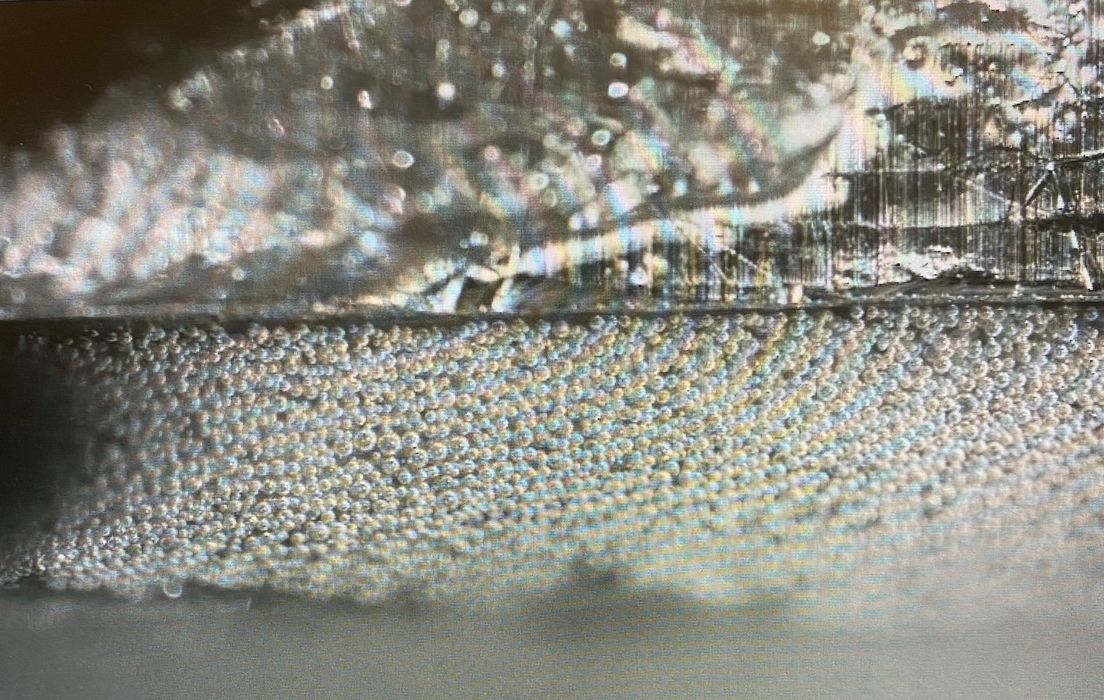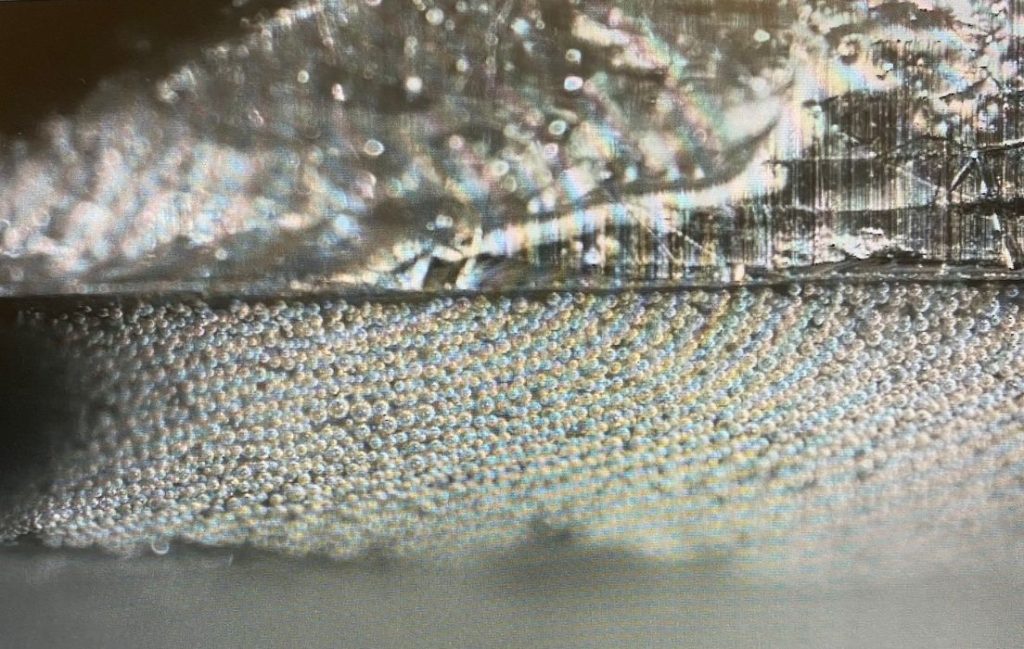
PrintFoam is a unique form of 3D printing that uses, as you might guess, actual foam.
There are plenty of fascinating materials that can now be 3D printed in a wide variety of processes, but foam is quite an interesting material.
As far as I know, there is only one other instance of foam 3D printing, and that’s with colorFabb’s foamy Varioshore filament, which bubbles up after extrusion.
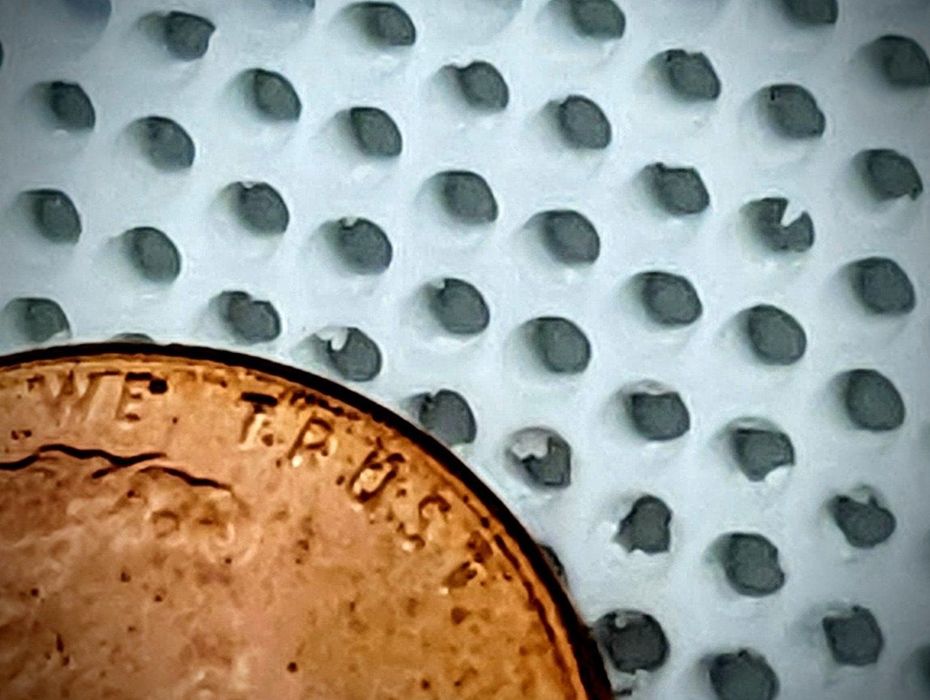
PrintFoam’s approach is quite different, and rather than using a single material, they have developed an entire system for printing foam with a variety of different materials.
But it didn’t start out that way. The company’s founder, Matthew Pearlson, developed a way to 3D print foam at MIT back in 2016, applying for a patent in 2017, US20180162052A1 “Additive manufacturing using foaming radiation-curable resin”. From Google patents, it appears this application was eventually rejected in early 2022.
How does this work, exactly? It seems that the process is a variation of the familiar SLA process, but with a way to deposit a layer of foam for polymerization instead of the normal liquid layer.
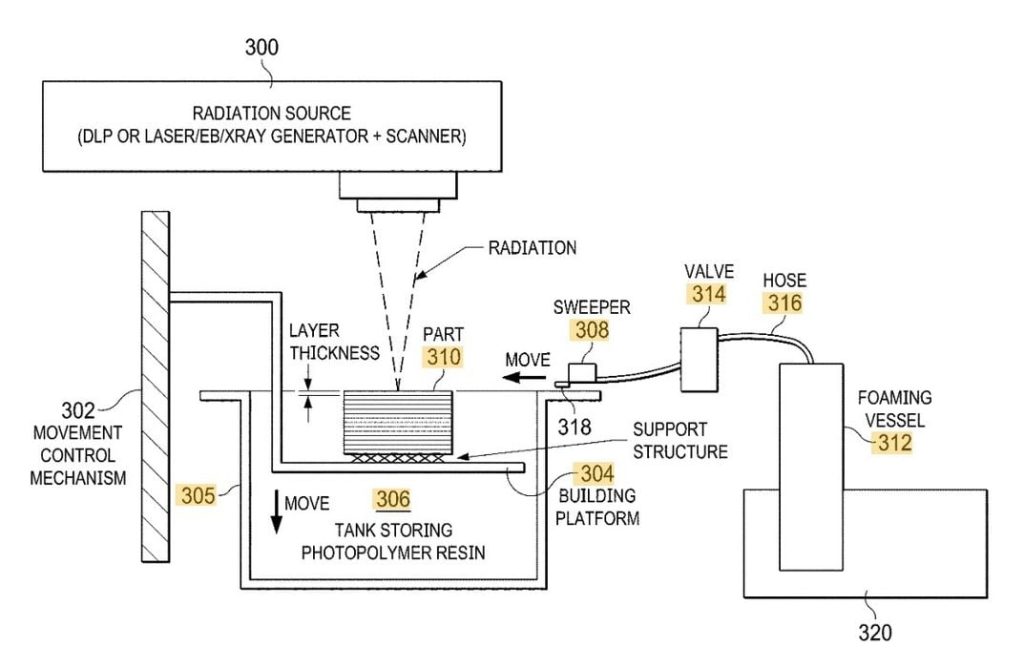
This diagram from the patent shows how the process works in concept. Note that it is a top-down process, rather than the more common bottom-up resin 3D printing systems.
There are multiple advantages to this process.
- The foam can apparently be controlled, likely by the foam “recoater”, which means the prints can have varying strengths and flexibility
- The resulting parts can be much lighter than traditionally dense parts
- The printing process is quite rapid, with full build volumes completed in only 15 minutes
- The recoating process is able to handle far more viscous materials, meaning more complex and stronger materials can be used
There’s another interesting advantage: traditional 3D printing achieves flexible parts through the use of complex lattice structures. To create them specialized and sophisticated generative software must be used, which is often really expensive and difficult to use. However, the foam approach produces similar (or better, according to PrintFoam) results and you don’t need to use the complex software systems.
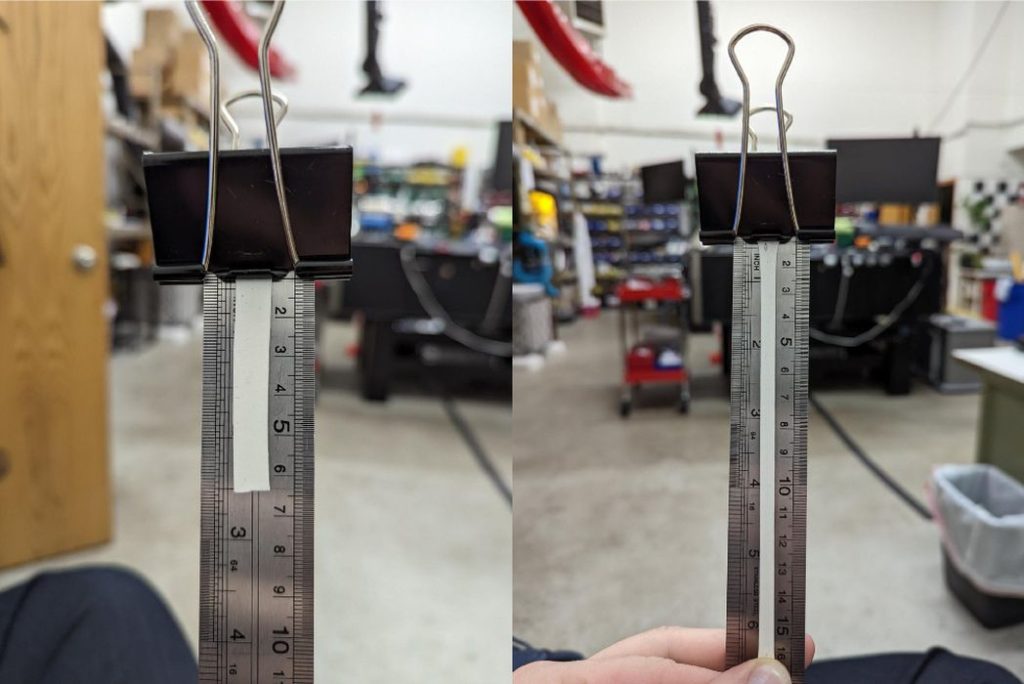
The company began by producing flat panels, like ceiling tiles, but during the pandemic a pivot took place. The company decided to more fully leverage their unique process in the wider world of 3D printing.
They’ve developed a couple of different 3D printer models that can use the process:
- Foam100: 100 x 100 x 15 mm build volume (for experimental use)
- Foam300: 300 x 300 x 15 mm (for prototypes)
- Foam1200: 1200 x 2400 x 25 mm (for production)
Note that the build volume of each system is quite short in the Z-axis. I’m not sure if this is indicative of a limitation in the process, or whether the company is considering building equipment with taller build volumes.
But it’s important to reflect on the usage of this technology: to build foam items, many of them are indeed flattish and would fit within these build volumes. It’s only when you get into more complex shapes, such as a liner for a football helmet, that you need a taller volume to accommodate a 3D shape.
While PrintFoam is still a small company, the potential applications for this technology could be quite large. However, like any new 3D printing process, the company will have to educate their potential clients on how it works and the benefits that could be achieved.
Via PrintFoam

